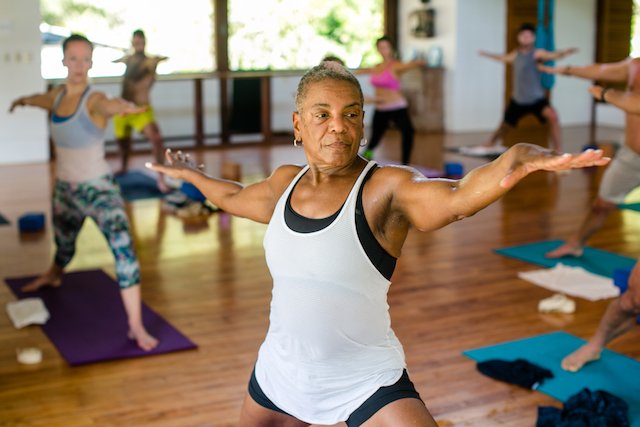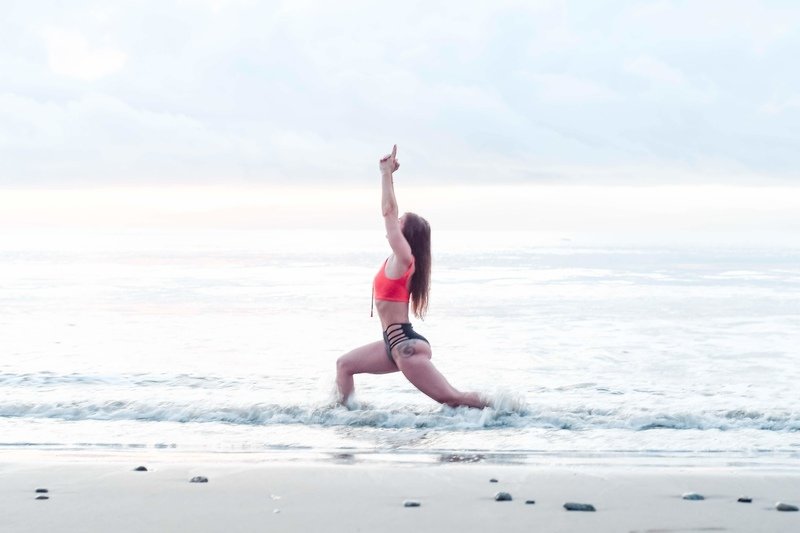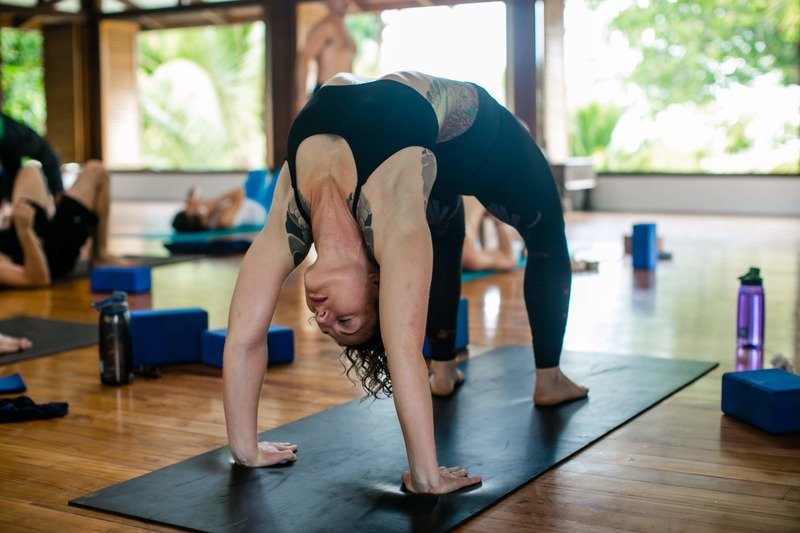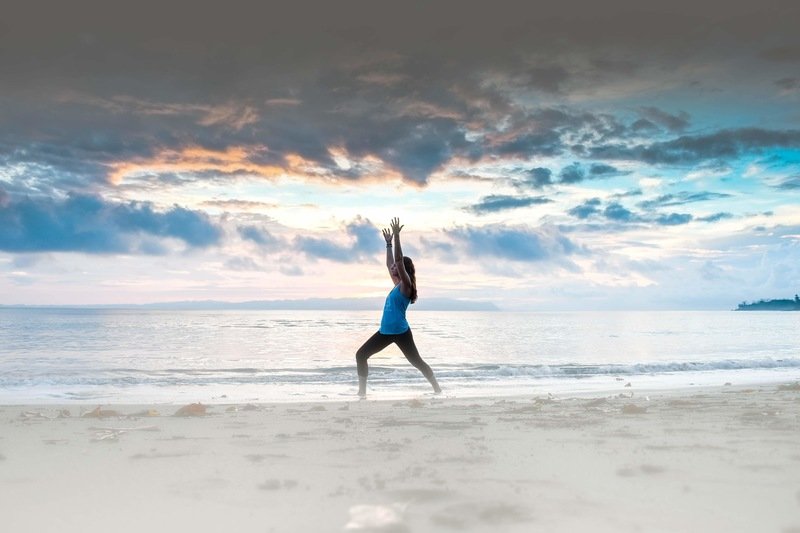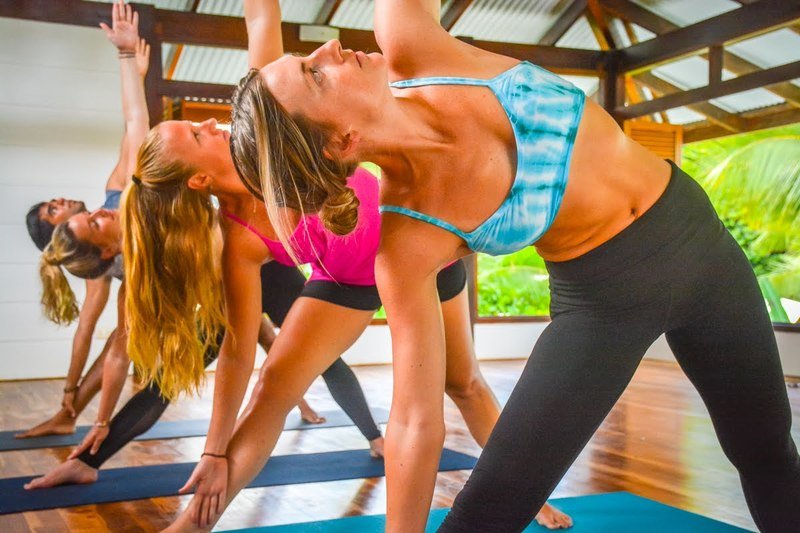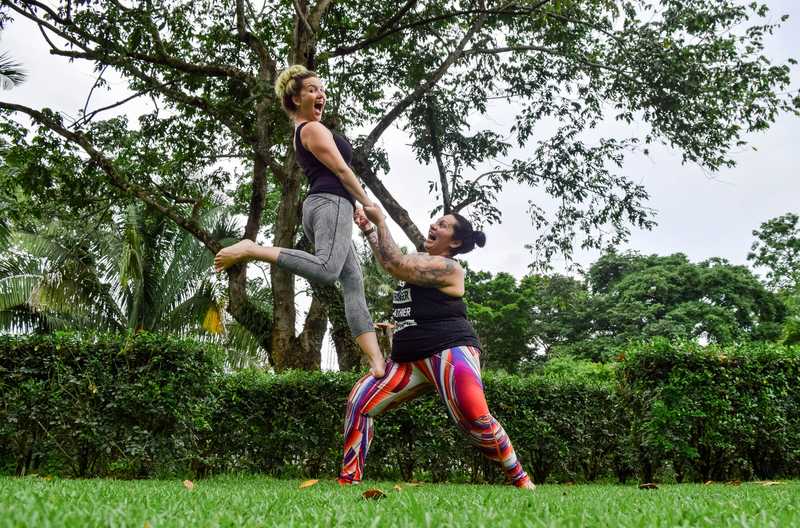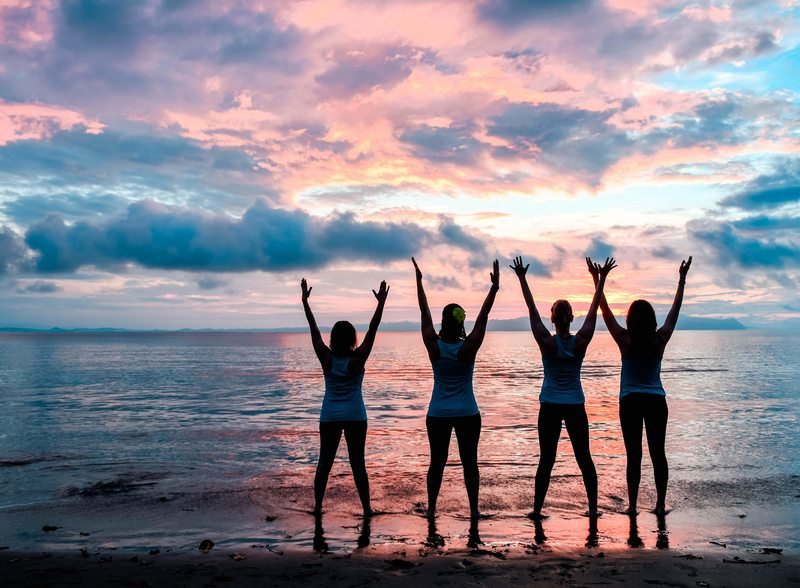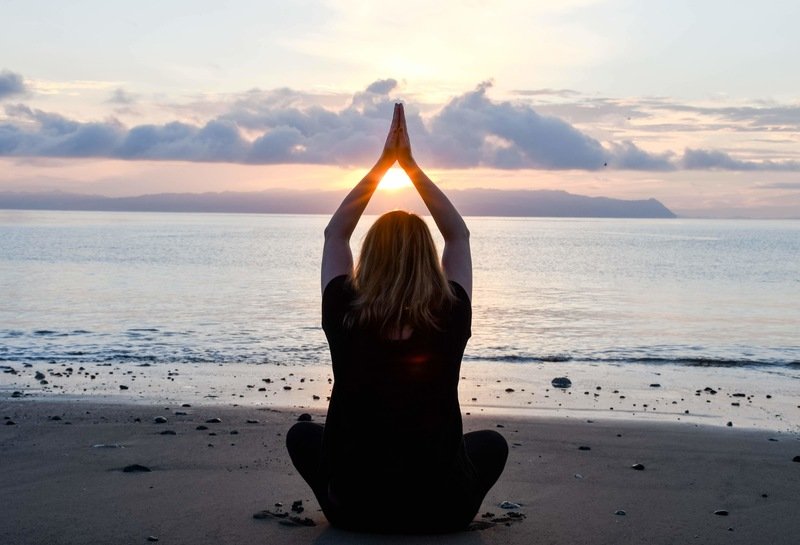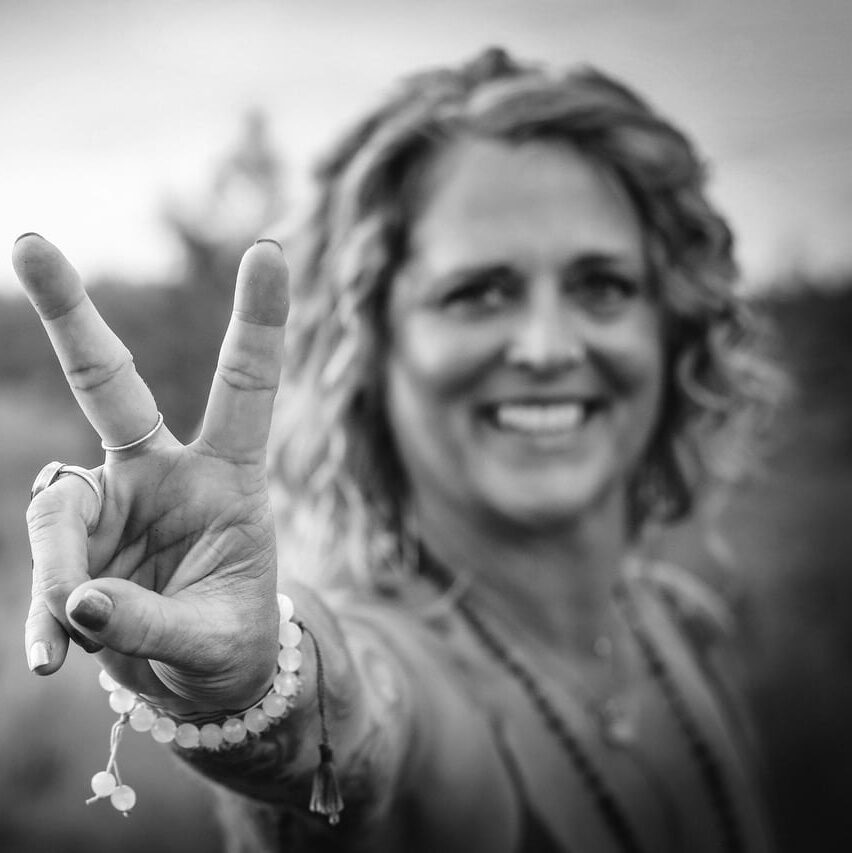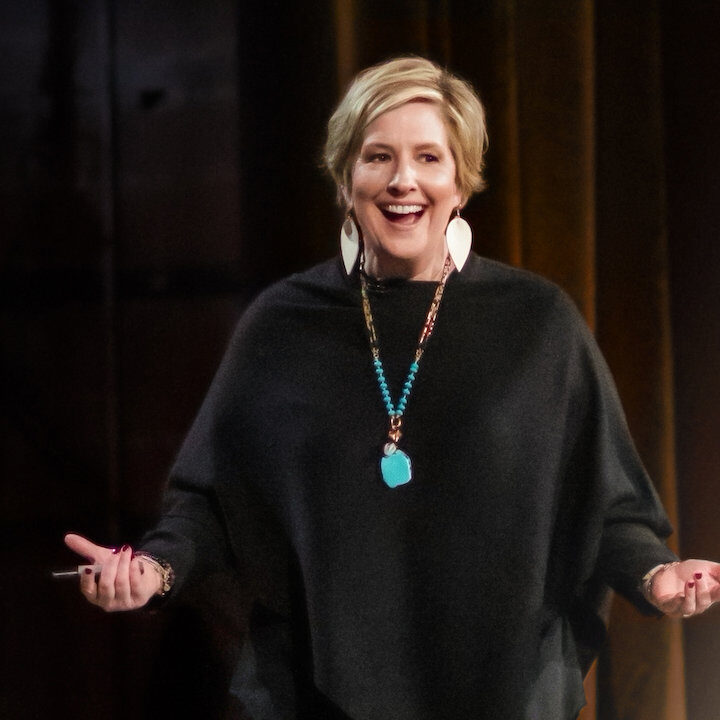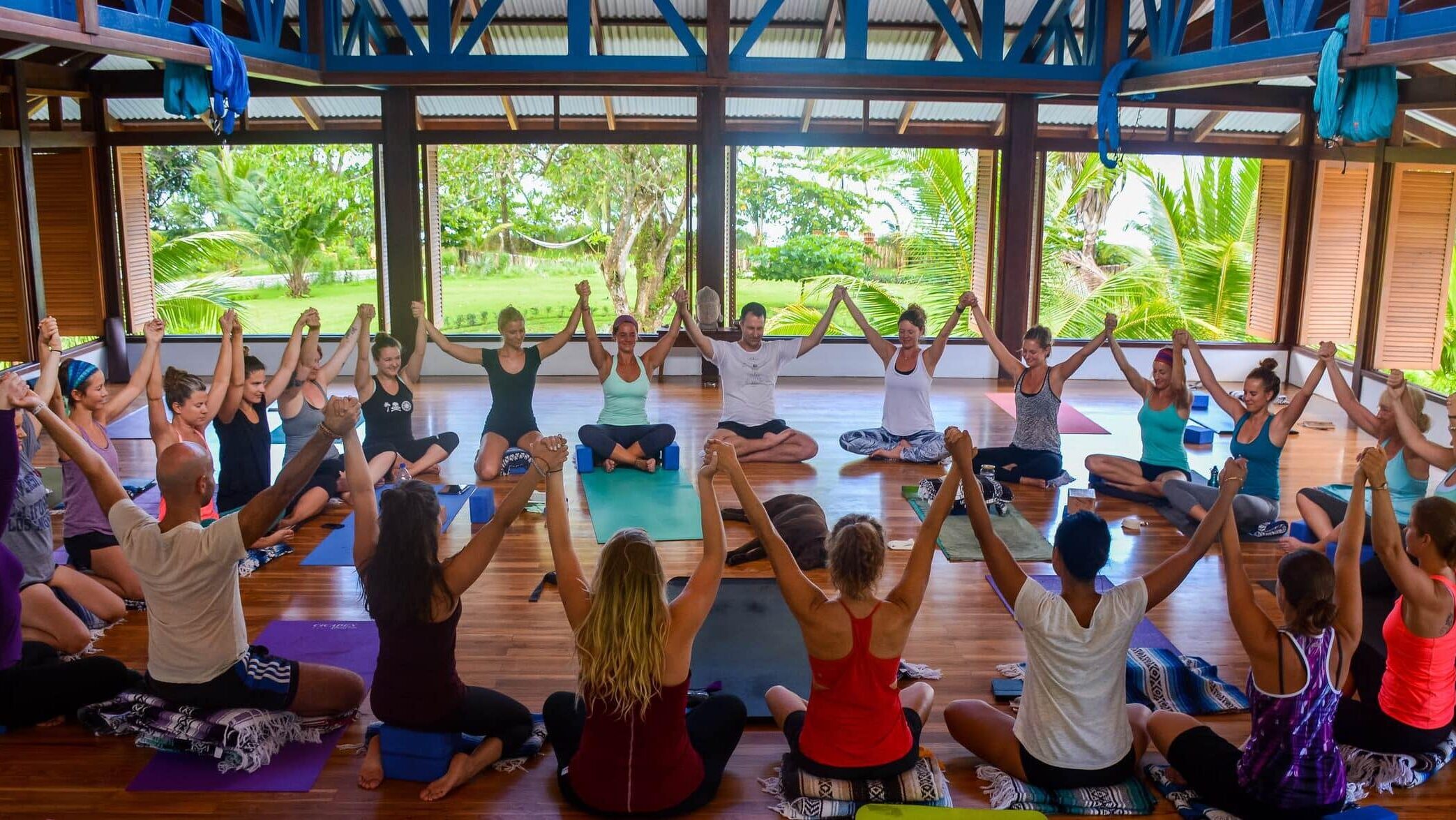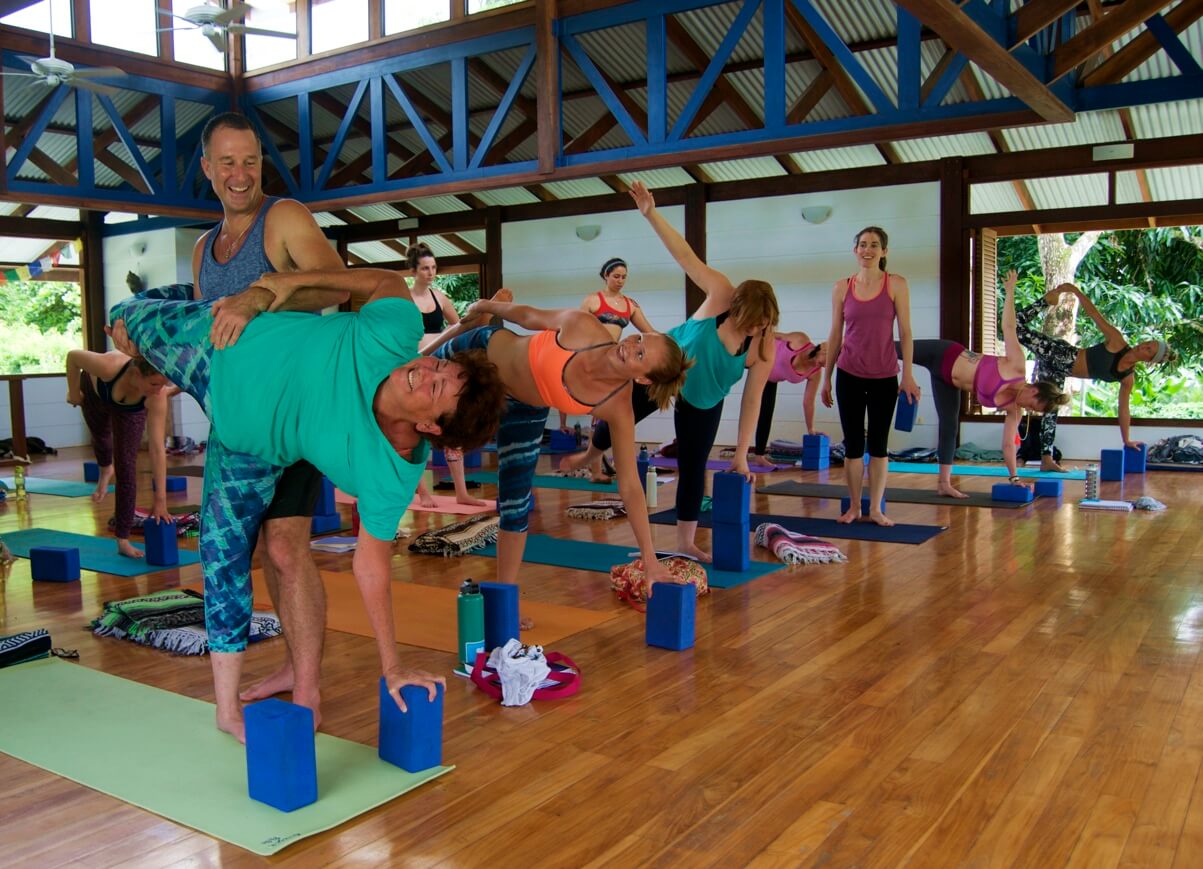Women’s empowerment is a defining issue of our times.
Despite all of the progress that has been made in our society, gender discrimination and women’s rights are still not quite issues of the past. Gender roles in society, issues with equal pay and job opportunity, as well as the commodification of sex all contribute to gender inequality. The practice of yoga is one way that many women have been able to find a sense of empowerment and independence from inequality in everyday life.
A great way to deepen your yoga practice, gain leadership skills, a sense of community, and learn to love yourself and your body is to join a yoga teacher training program. Even if you do not desire to teach yoga classes for financial gain, yoga teacher training provides excellent knowledge to help a person really explore themselves and their relationship with the world around them. Yogic philosophy exemplifies so many beneficial tools for handling the obstacles that come with everyday life. We can never really change or control the things that are thrown at us in life, but we can control how we react to those things, and our ability to self-regulate in the face of adversity.
“Nevertheless, she persisted.”
This is a slogan of a new wave of feminism and the fight for women’s rights . . . because that’s what women do: they persist. Throughout history, women have fought for their rights and the rights of others.
All significant change starts from within; a fantastic tool to utilize is yoga.
So, what’s yoga got to do with the empowerment of women?
In the world of yoga, persistence can take many forms.
It takes persistence to push through a challenging asana. You may need this virtue of persistence to get through those last five minutes of meditation after your feet have gone numb. Persistence may even take the form of waking up early for class when you just want to sleep in. However, persistence has more significance than this when considering the topic of female empowerment.
On your mat, you can find the courage to persevere. You can challenge yourself to be better, stronger, and more confident. When we learn this discipline, or what is called tapas in yoga, it can be translated into our everyday life. This is when one begins to learn that yoga truly is a lifestyle and a mindset. Yoga teaches us to deeply connect with ourselves through the practice of self-study or svadhyaya. As women fight their daily fight- for rights, equality, and justice- knowing their power comes from within can only make them stronger.
So, before we can talk about exactly how yoga can help you feel empowered, we have to define the issue itself.
The Meaning of Women’s Empowerment
At its most basic level, female empowerment means giving women the power to move without limits through their lives – in both personal and professional spheres. It means giving women the choice to live their lives with autonomy and define their own path: a path without restrictions, fears, dangers, legal roadblocks or inequality.
Female empowerment enables women to make choices and seek fulfillment without boundaries. It means improving self-worth and encouraging women and girls to be all they can be.
Equal pay, reproductive rights, freedom from violence, representation, education, job training . . . these are only a few of the ways to apply this idea to our world physically.
Not only is it important to consider gender equality, but also equality and empowerment for ALL types of women. Rather than women feeling the need to compete against one another or compare themselves, true female empowerment aims to encourage women of all types to UPLIFT and SUPPORT one another, despite perceived differences.
Here are some questions for our readers to consider:
What can you do to take steps toward empowerment?
How can you make real changes in your life to build strength?
How do I build more self-confidence and self-love?
How can I be uplifting to all types of women?
What judgments of myself and others can be released?
What Aspects of Yoga Relate to Female Empowerment
For many women, yoga can be a space to charge their energy to face the world. Practicing yoga provides an opportunity to look inward, to care for yourself and to give yourself a slice of space and time to grow. This is something everyone deserves, especially groups of people who may not get that time in their lives otherwise.
Women, especially, lack time for themselves. Working women often have to do more work for less money than their male counterparts. They work harder and longer to convince their higher-ups to pay them what they deserve. Too often, this is coupled with sexual harassment and the need for defensive mentalities.
Many mothers balance these struggles with their motherhood – which, in itself, is a full-time job. A mother or guardian caring for their children’s needs hardly leaves them time for themselves.
Disenfranchised groups persist. From abuse, violence, prejudice and discrimination, and exploitation, they fight battles many of us never see or know. In the middle of the battlefield of life, a gift of quiet and safety is priceless.
A common concept heard in spaces of practice is to allow yourself the opportunity to be present, to feel, to experience life as it comes to you in the safe and quiet space you have dedicated to yourself. To do this is a powerful act. It has limitless power.
Remember: you cannot fill from an empty cup.
Asana
Asana is the third listed in the 8 Limbs of Yoga, one of the most important scriptures to study in the pursuit of understanding yoga.
The term asana means “to sit” and refers to the physical postures completed in a yoga practice. Two qualities of every asana practice should be to engender ease & stability. In yogic terms this is called sthira and sukha. The goal of practicing asanas is to make our body and mind stronger in order to prepare for stillness in meditation.
Practicing asanas also reduces pain in our physical body as we go through life by keeping the practitioner limber and healthy. To reduce physical pain is to allow for more stability and ease in everyday life. This means that a person can then turn their attention towards looking within themselves instead of focusing on external sensations.
Practicing yoga can offer strength building, leaving a person feeling more stable and supported in everyday movements. Moving the body in different ways allows a person to become more connected with their body, promoting an internal sense of confidence and self-love.
More time spent connecting with and just noticing how the body feels leads to a greater ability to accept and find gratitude for all parts of the body. This is something that many women struggle with due to the extreme beauty standards placed upon women in society. The commodification of sex means that unrealistic depictions of women’s bodies are often used in media and advertisements, and become the desired yet unattainable aesthetic for the majority of women. Practicing yoga, getting a stronger and healthier body, and getting a deeper connection with the body can help women release these insecurities about aesthetics and appearances.
Connecting the mind and body in this way is energizing and empowering. Your physical strength becomes your inner strength.
Svadhyaya
In this dedicated space of time, women can enjoy the practice of meditation. The gift of a quiet and safe place can allow women to practice an integral part of yoga: exploring the self.
Svadhyaya means self-study and is listed as the fourth Niyama (recommended activities and habits for healthy living, spiritual enlightenment, and a liberated state of existence) in Patanjali’s 8 Limbs of Yoga. Practicing yoga and meditation is one way to complete Svadhyaya.
Meditation is an action of quiet reflection, often to calm the mind and relax. In having time to explore and process your feelings, you can seek more order in your mind. Having clarity and peace is the best way to tackle life’s challenges.
The stress of everyday life can be extremely overwhelming, and for many, it can cause serious health issues. Meditation counters many of these issues – both physical and psychological. Practicing meditation has proven health benefits such as lowered blood pressure, mood regulation, anxiety control, and can even reduce stress-related hormone production like cortisol. And this doesn’t just apply to the regular stresses of everyday life. People who have experienced severe traumas benefit in the same ways.
Paired with the health benefits that you feel in your body, meditation offers enormous mental health and psychological benefits. Carving out even a small amount of time for self-reflection helps people practice mindfulness and presentness.
Yoga means union. This can be interpreted in so many ways, but the most important interpretation is to unite the Self with the Self. When one realizes that peace, love, and calmness can only be found within oneself, there is no realization more empowering. To finally realize that you are in control. Let’s make it our mission to continue to remind ourselves of this truth every moment, and remind those around us as well.
OM SHANTI SHANTI SHANTI . . . Peace to you, peace to me, peace to the WORLD.
We all deserve to be empowered, despite any perceived differences. May we find this union that connects us all.
A Message from Blue Osa to our reader:
We hope these tools are of service to you. Our goal at Blue Osa is to create a safe space for all people. Please take a moment to watch the video below and a powerful message from our own Karina Mirsky.
If something in you has lit up from reading this post, it was meant for you. It’s a sign that yoga may be the answer you’ve been searching for. And we at Blue Osa couldn’t be more excited to welcome you to our family and our community and to support you on your journey to Self. For more information on joining a yoga teacher training at Blue Osa in Costa Rica, click the link below.
Check Out These Other Popular Posts!
Tags: empowerment, women
Book/Inquire Now
Got pain? This will help you!
YOU DESERVE TO LIVE PAIN-FREE...
Receive 7 short, simple, and effective practices to alleviate knee, hip, low back, neck, shoulder pain, and more!
All you need is 5 minutes per lesson and it's FREE!
This revolutionary approach to yoga is new, and no one else is teaching this! Since I created Applied Yoga Anatomy + Muscle Activation™ and started teaching it consistently, I've witnessed students heal long-standing injuries, access yoga postures they never thought possible, and tell me over and over again how their body just feels better.
I hope you'll join me on this journey!
~Yogi Aaron
Is Yoga Teacher Training Right For Me?
We Created This FREE 5 Part Series So You Can Get All The Information To Make The Right Choice.
In this series, you will learn:
-
- Am I a candidate for yoga teacher training??
-
- What will I learn in a YTT?
-
- Do I need to have a perfect downward dog to attend YTT?
14-Day 200-Hour Yoga Teacher Training in Costa Rica
If you are looking for a 14-day 200 hour Yoga Teacher Training Costa Rica Immersion, you have landed in the right place. Join the next one!
300-Hour, 28-Day Yoga Teacher Training
Do You Feel Called To Something Greater?
This 300-Hour Yoga Teacher Training immersion training at Blue Osa will immerse you in yoga for one month.
You will have the specific transformational skills and yogic practices you need in order to connect with your higher purpose.
And more! You will be able to offer these transformative skills to others!

